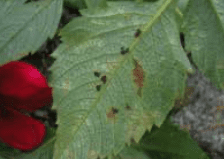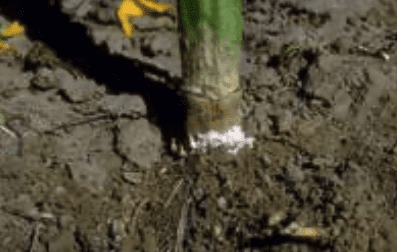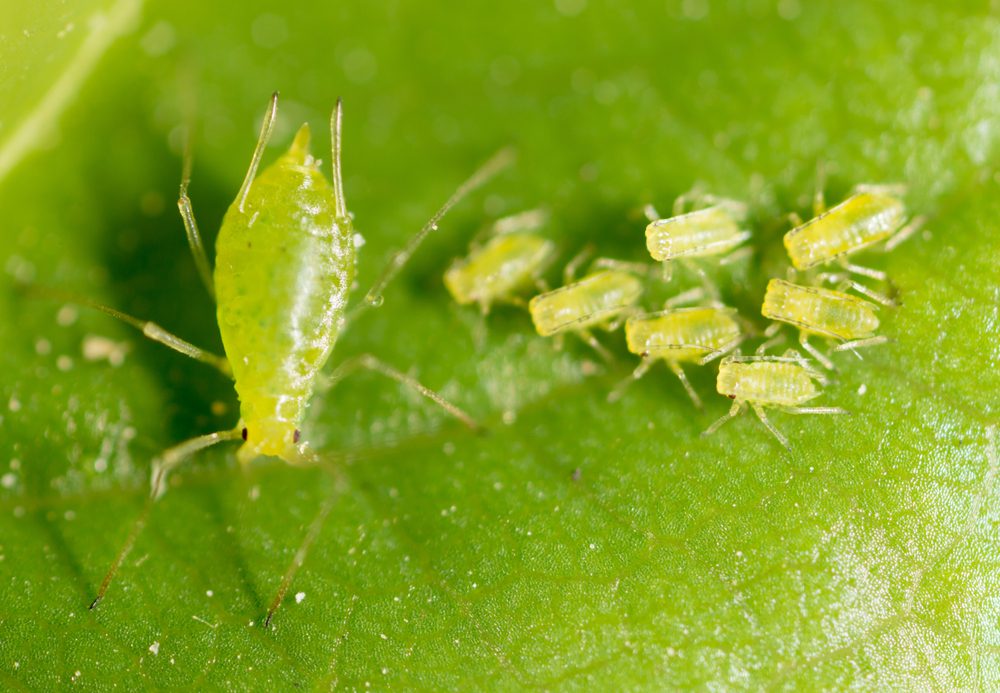Dahlias are easy to grow and produce the most amazing blooms, but as with all living things, they can be affected by various pests and diseases. We’ve gathered a list of the most common problems accompanied by their control measures. Remember to consider hygiene and to start with healthy starting material. Prevention is better than a cure! Foliage or flowers damaged by insects or disease will not recover. If the problem is addressed, new growth should be fine.
How to Prevent Pests & Diseases
Dahlia Smut (Entyloma dahliae)
Symptoms: Light green to yellow round spots and sometimes angular spots bounded by veins appear primarily on the lowest leaves and measure up to 7/16″ (2-10mm) across. The infection occurs mainly during flowering and then particularly under humid conditions.
Prevention/Control: Use a generous crop rotation period. Choose a planting density that will allow the foliage to dry quickly after rainfall. Remove and destroy diseased and dead plant parts. If necessary, spray with a fungicide according to instructions.

Aerial Stalk Rot (Sclerotinia sclerotiorum)
Symptoms: The sudden weakening of one or more stalks on a plant is a symptom of this disease. Large sclerotia with the appearance of rat faeces form inside the hollow stems. Damage occurs primarily on plots that are regularly used for producing host plants such as Dahlia, beans, Chrysanthemum, Liatris and potatoes.
Prevention/Control: In case of an infestation, spray with a fungicide according to instructions. Remove and destroy diseased plants along with neighboring plants. Steam infected soil. Use a generous crop rotation period.

Aphids
Symptoms: The upper leaves of young shoots become misshapen or tightly curled. Clusters of black or green aphids can be found on the undersides of these leaves and sometimes on young stems and flower stems as well.
Prevention/Control: If necessary, spray with a insecticide according to instructions.

Spider Mite
Symptoms: Affected leaves turn dark brown in places and fall off prematurely. These symptoms are generally caused by Tetranychus urticae (Red Spider Mite) that occurs on many host plants. Hot dry weather increases the reproduction rate of spider mites.
Prevention/Control: Spray regularly and according to the instructions with an agent that controls red spider mite.
Thrips (Thrips tabaci)
Symptoms: Affected plants display a noticeably slowed rate of growth. Often, the lowest leaves are shaped normally but the younger leaves are highly misshapen. Flower formation is also disrupted. Hot dry weather increases the reproduction rate of thrips.
Prevention/Control: Spray with insecticide according to instructions. Be sure to treat the tips of the buds thoroughly.